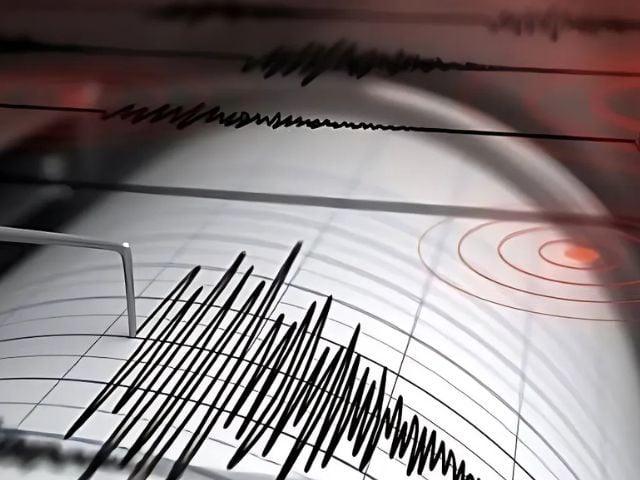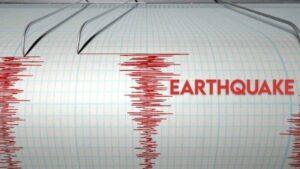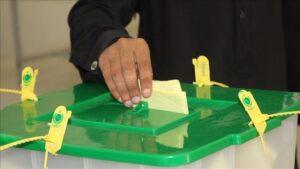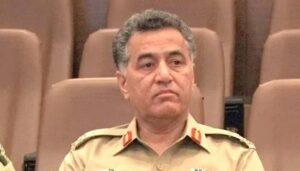A total of 19 soft earthquake tremors have been recorded since Sunday night, an unprecedented event in the history of the city of Karachi.
Tsunami Karachi’s first warning cell has published official data, confirming that the strongest earthquake measured 3.6 magnitude, while the weakest was recorded with 2.1 magnitude.
Of these, 11 tremors were recorded in the Malir district, while the remaining ones felt in the southwest part of Korangi and the northeastern areas of DHA.
Experts attribute repeated seismic activity to changes in underground tectonic layers. These tremors are caused by the release of energy generated by the low -level seismic movement below the surface of the Earth.
In response, residents in several streets and neighborhoods of Malir and Quaidabad have chosen to remain outdoors, establishing shelters and temporary tents in open areas. The women gathered throughout Monday to recite the Sacred Koran, praying for security.
Commissioner Karachi Syed Hassan Naqvi urged residents to keep calm and not believe in rumors that circulate on social networks.
Read: The light earthquake shakes Karachi; No damage is reported
According to the National Center of Tsunami (Department of Meteorology of Pakistan), these tremors are not a warning sign of a great natural disaster, but a natural geological process. This activity can actually help balance the local failure line in the coming years.
Ameer Haider Laghari, head of the Tsunami National Center, explained that the Quaidabad fault line remains active and that the situation could continue up to a week.
The first earthquake in Karachi was recorded on March 31, registering 4.7 magnitude with a depth of 19 kilometers. On the contrary, this last sequence has shown a consistent pattern, specifically in Malir and Quaidabad, where nine earthquakes of low to moderate intensity were produced in two days. Several parts of the city felt the tremors.
Chronological details of seismic events include:
-
Sunday, 5:33 pm – Magnitude 3.6, depth of 10 km, epicenter: qaidabad
-
Sunday, 10:29 pm – Magnitude 3.2, depth of 10 km, epicenter: qaidabad
-
Sunday, 11:45 pm – Magnitude 3.1, depth of 10 km, epicenter: 40 km southeast of Malir
-
Monday 1:06 am – Magnitude 3.2, depth of 12 km, epicenter: Gadap Town
-
Monday, 11:04 am – Magnitude 3.2, epicenter: qaidabad
-
Monday 12:17 pm – Magnitude 2.2, depth 29 km, epicenter: Southeast Malir
-
Monday 1:11 pm – Magnitude 2.4, depth 188 km, epicenter: 11 km east of Malir
-
Monday 1:38 pm – Magnitude 2.9, depth 5 km, epicenter: near DHA
-
Monday, 9:49 pm – Magnitude 3.0, depth 13 km, epicenter: 30 km east of DHA
In an interview with Express newsAmeer Haider Laghari pointed out that earthquakes come from natural tectonic changes, where accumulated energy on Earth is gradually released, which gives seismic activity. He stressed that this is a global geological process, which occurs in some regions more frequently than in others.
He recalled similar tremors in northern Pakistan, where the activation of a failure line caused panic in Islamabad and nearby areas for several days.
READ MORE: 4.6 The earthquake of magnitude is shaken to the northwest of Pakistan
Laghari said that Karachi earthquakes are low intensity, and each posterior tremor has been less intense than the previous one. He also clarified that these are not replicas, since such minor earthquakes generally do not produce replicas, they are independent seismic events.
He warned that Malir, Quaidabad and the surrounding areas can continue to feel tremors for two more days a week. Pakistan is located in a shallow earthquakes, which means that most earthquakes occur at low depths.
He also highlighted other active failures in the region, including Landhi’s failure line, Thea Bula Khan and Foundry Western Kirtha Range Foundry failure.
As a precaution, he informed that structurally weak buildings should quickly evacuate during tremors. People should avoid standing near the walls and, instead, look for open spaces for a temporary refuge.
Provide a broader context, said Dr. Adnan Khan, associate professor and geologist at the University of Karachi PAkGazette Express that these were minor tremors and not a cause of alarm.
He explained that Karachi is located in a passive tectonic margin, far from any important failure line, causing large and destructive earthquakes to be very unlikely in the region.
“These tremors are classified as mild, as a result of minor tectonic movements and accumulation of stress in the depths of the earth’s crust,” said Dr. Khan.
READ MORE: 3.6 Quake of magnitude is shaken Quetta
He also linked these movements indirectly with the tectonic activity of the Himalaya, where the change to the north of the mountain range, 4 to 5 cm annual, can generate distant tectonic pressures, occasionally manifesting as low intensity earthquakes even in distant areas such as Karachi.
Dr. Khan also pointed out human factors that can play a subtle role in the alteration of underground stability, including the incineration of industrial waste and excessive extraction of groundwater, which can influence local seismic behavior over time.
While scientific consensus remains that these tremors are harmless, both Laghari and Dr. Khan emphasized the importance of basic security awareness.
Dr. Khan also advised citizens to remain calm during any tremor and move immediately to open areas, staying away from the walls, foundations or high structures.
Meanwhile, at least 216 prisoners escaped from the Malir District prison in Karachi on Monday night after earthquake tremors led to a temporary evacuation of inmates, confirmed the superintendent of the Arshad Shah prison early on Tuesday.
According to Shah, the prisoners exploded confusion during the evacuation to flee. In response, the security forces, including the police, the rangers and the frontier body (FC), quickly deployed to ensure jail and avoid more escapes.
The General Ghulam Nabi Memon inspector reported that 78 of the escapes have been recovered, while an important search operation is being carried out to find the remaining fugitives.
Since then, safety in the installation has hardened, and the rangers take over the perimeter and the police strengthening security within the prison.




